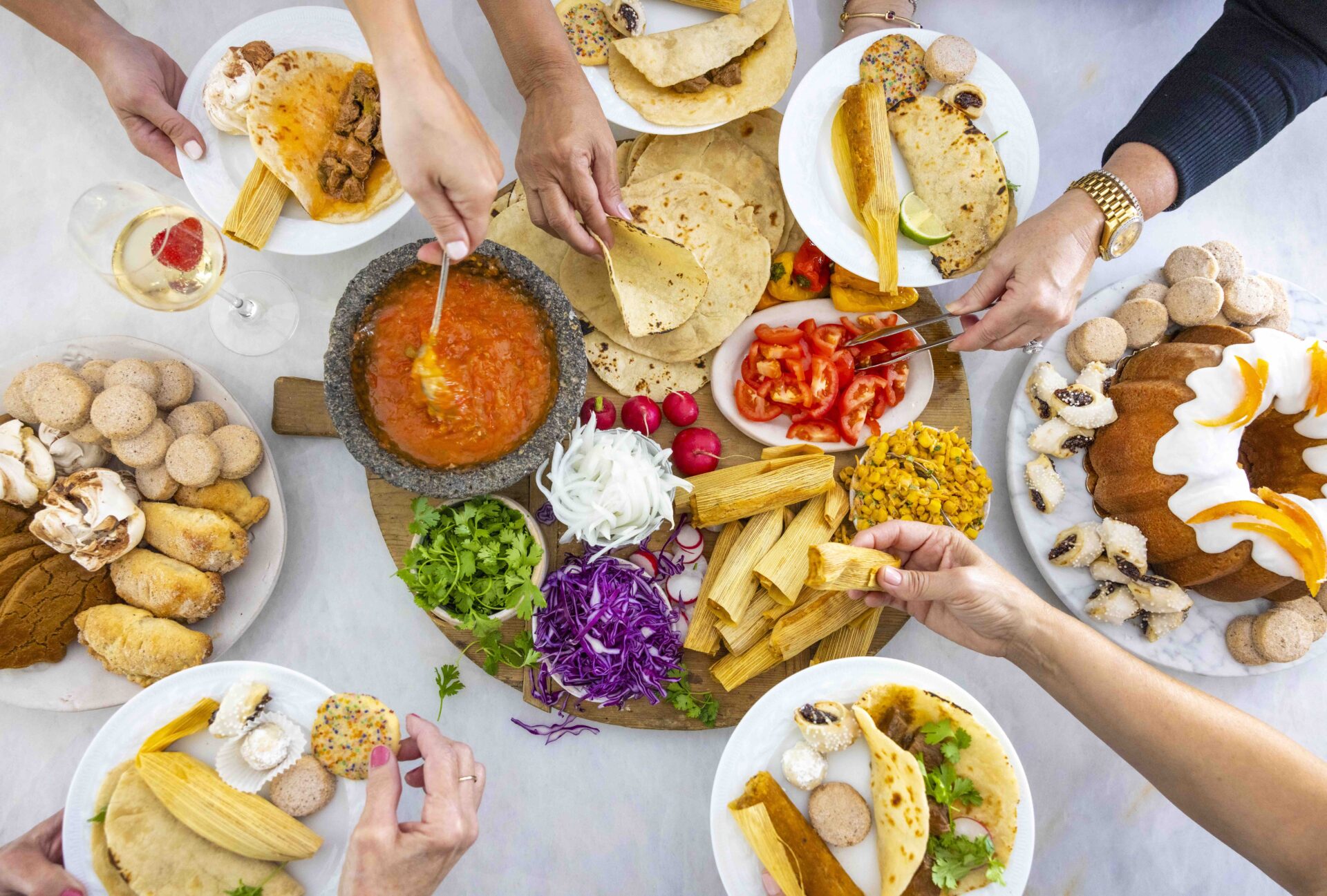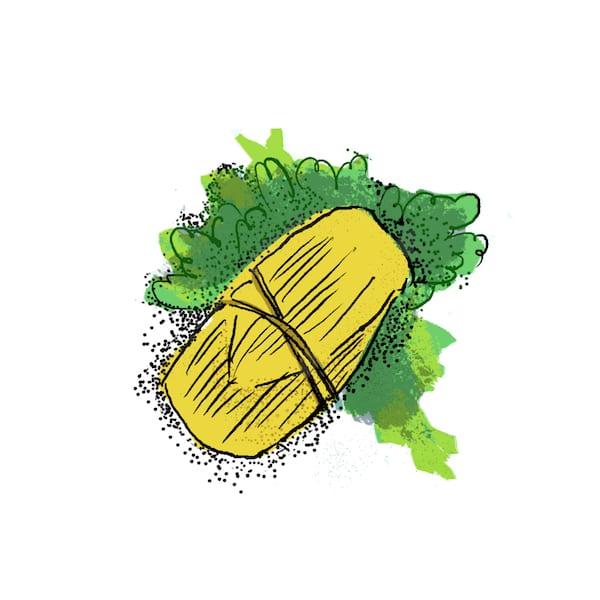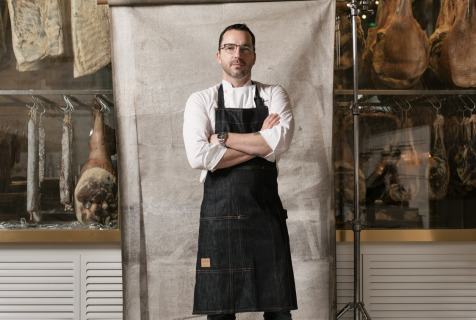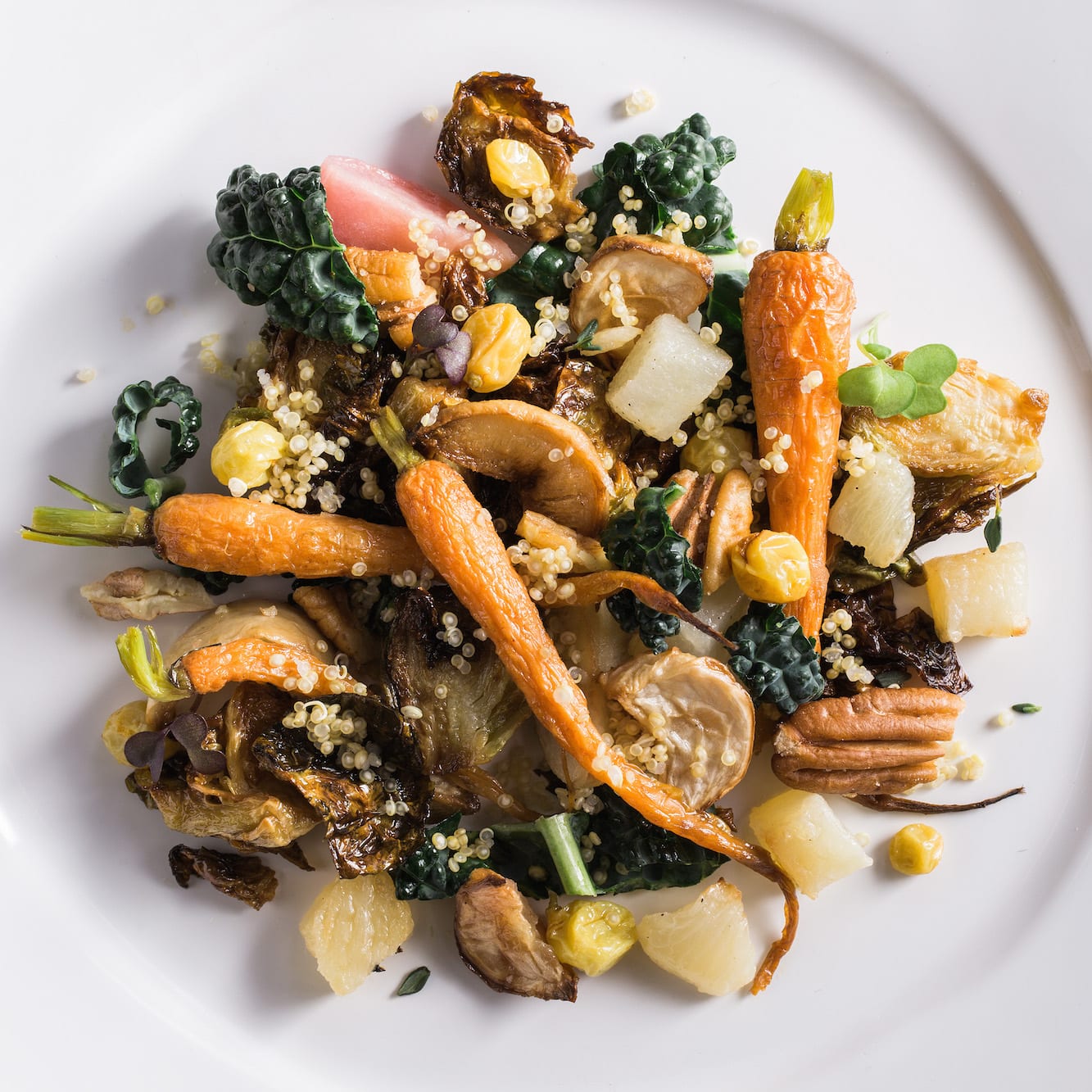For Yvette Jemison, making tamales each holiday season is a family affair
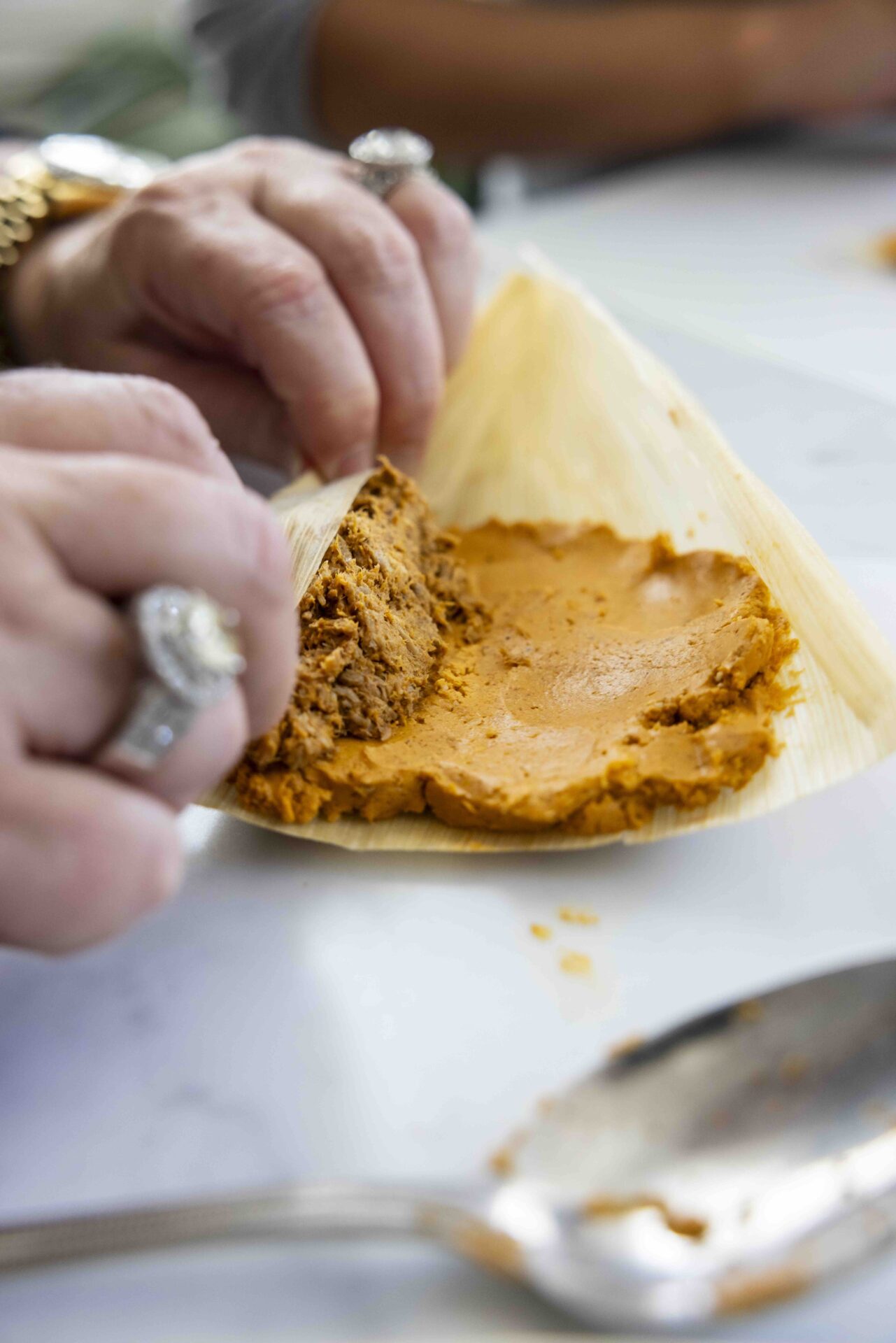
Each Year as fall faded and we entered the Christmas season, my grandmother hosted a tamalada, or a tamale making party. Growing up I viewed these loud gatherings filled with laughter not as parties but as a yearly labor of love. Every family member who attended the tamalada was assigned a small task and took a seat around the table, creating a tamale assembly line. I was usually assigned the task of measuring the lard and spices that were added to the masa. By the end of the day, we had created enough tamales for everyone to take home and freeze for the upcoming holiday season.
The hosting family member of each tamalada consistently added their own special influence. My paternal great-grandmother owned a tortillería in south Texas and provided fresh masa from her shop. Likewise, my maternal grandmother was a seamstress who offered me the chance to select my apron from stacks of garments she’d lovingly made. Personally, I enjoy setting up my tamalada cooking stations and snack platters with pottery that I have either collected or created at a local studio.
Hosting a tamalada for the first time offered me the opportunity to perform every step in the process myself, during which I quickly learned I was unfamiliar with the correct way to execute several of these tasks. After days of prepping and preparing tamales, I ruined the first batch while attempting to steam them. At one point, I had rapidly boiling water creating vigorous steam, melting the masa and leaving me with a mess of filling everywhere. I was grateful for my Tía Odilia’s guidance that day, reminding me a low boil with soft wisps of steam was necessary to gently steam the tamales.
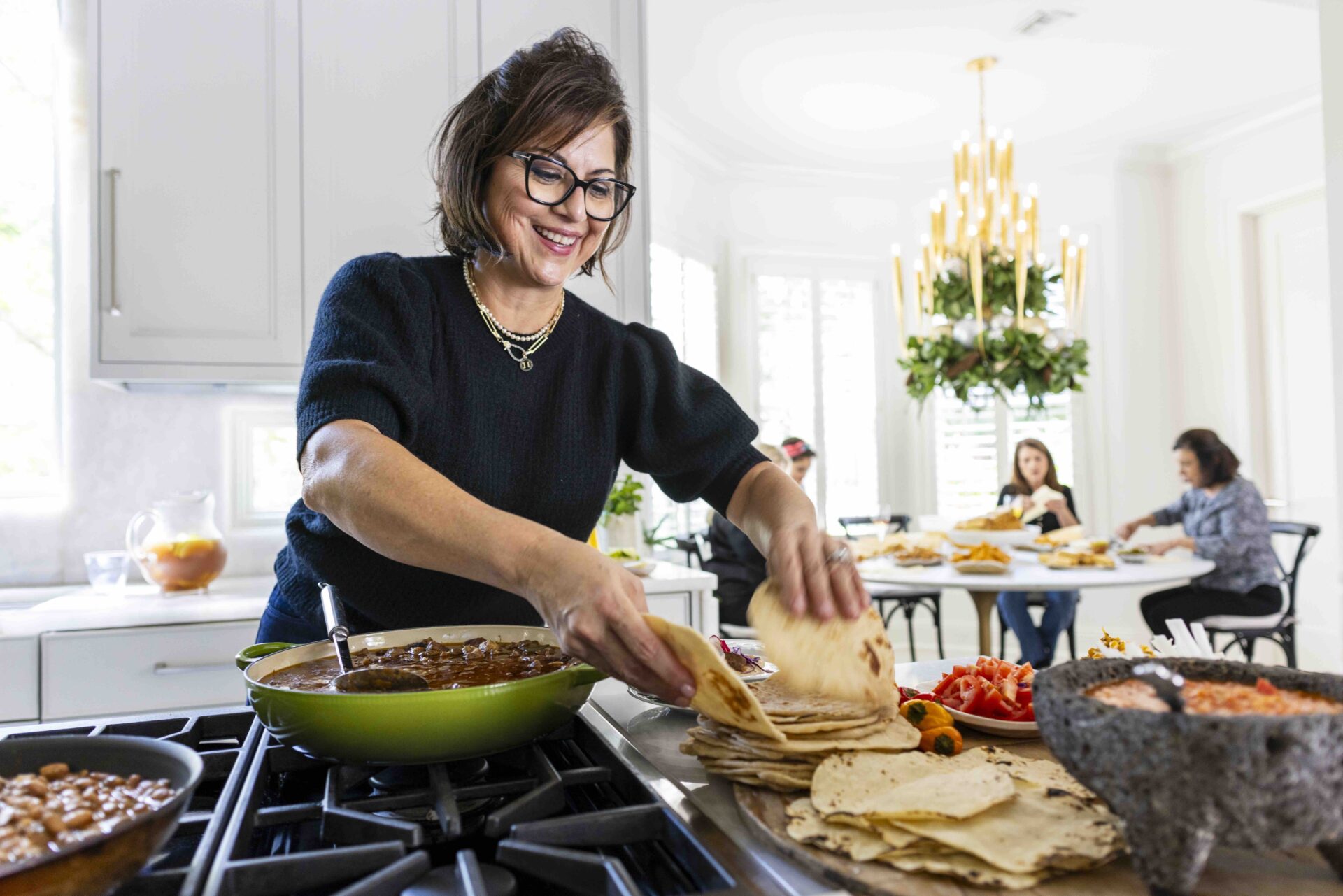
I try to share my tamale tips at these cherished events with as many loved ones as possible. When I discuss my family’s tamalada with my Louisiana friends, they’re intrigued and often say that they want to join my next one. Soon the myriad questions begins: “How does the filling get in the middle of the tamale?” “What do you mean, you use a corn husk as a wrapper?” “How is a tamale cooked?” I answer their questions and explain that no step is difficult; however, it is a labor-intensive process to make the filling, season the masa, prep the corn husks, and assemble, steam, and store the tamales.
Assembling tamales on the day of the tamalada involves quite a bit of labor, but with many hands (and refreshments for sustenance) you’ll get the job done. I’ve been taught many tips for making tamales that I share in detail in my cookbook, My South Texas Kitchen (YDelicacies, 2022). The most important is doing as much as possible ahead of time to make assembly efficient. Start prepping ahead, make your guest list, and invite your family and friends for a most heartwarming gathering.
Get the Recipe: Pork Tamales
Keep Reading
In the Field
Hot Tamales
Follow one writer’s discovery of Delta tamales, which are smaller than their Latin American cousins, and made with cornmeal instead of masa.
In the Field
Exploring San Antonio Restaurants with Chef Steve McHugh
Chef Steve McHugh dishes on his two new San Antonio restaurants, Luminaire and Las Bis, and how keeping things local and natural remains his goal.
On the Road
Farm-to-Table Restaurants in Every State
From James Beard Foundation recognized chefs to up-and-coming, eco-minded talents, here are the standouts reigniting the movement.






